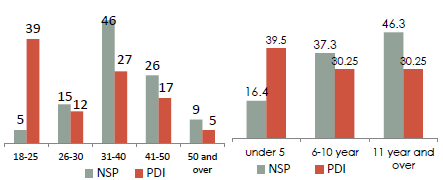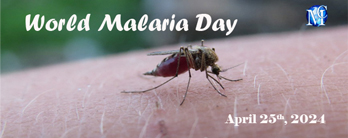Journal of
eISSN: 2373-6453


Background: Consumption of injecting drugs (mostly home-made drugs) and correspondingly needle sharing practice remains the main factor of spreading HIV among people who inject drugs (PWID) (55%) in Georgia. According to last BSS studies there are estimated 45 000 injecting drug users in the country.1,2 Significant amount of PWID still are beyond existing needle and syringe Programs (NSP) and have never tested on HIV (75%).3 The most hidden group for NSP programs are female and young PWIDs who are been considered to be one of the most vulnerable sub-population in this group. Needle and syringe program is being operating in 11 cities of Georgia and is represented by 14 harm reduction sites throughout the country. The program ensures coverage of significant portion of PWIDs (10,000-12,000 per month), and offers different services for HIV/AIDS prevention. Among delivered services Peer Driven Intervention (PDI) is one of the meaningful efforts to attract drug users to HIV prevention programs from more hidden sub-populations.4 PDI is the comparatively newly developed model for attraction the population of difficult availability for AIDS prevention programs, to facilitate distribution and consideration of the correct information, PDI reveals effective in the direction of HIV-AIDS educational prevention. Recruiting the drug users by the peers is carried out by means of monetary, promotional incentives -however it is comparatively cheap, compared to the traditional outreach model and is successfully applied for covering the large sample of the various groups of drug users - female and young drug users.5 Peers attracted by PDI are mostly never reached by any HIV programs, accordingly their knowledge and risky behavior stayed relatively unfavorable and poor.
The objectives of this study are
The cross-section design and Non-Random Sampling Design Respondent Driven Sampling (RDS) - was used to recruit PWIDs that have never been in contact with HIV prevention programs (first sample) and are PDI participants, and convenience sampling to recruit PWIDs that are NSP clients for more than 6 months (second sample).8-10 The first sample recruitment commenced from the so-called “seeds”. Various characteristics of seeds were foreseen during selection. Each seed and further recruited PDI client upon filling the study questionnaire and going through the educational interview, was given 3 coupons with the unique codes, according to which each participant was entitled to bring along 3 more client. Without this coupon the client should not been involved into the program.
Each study participant was encouraged monetary awards for filling the questionnaire, teaching and attraction of the other PWIDs/further PDI clients. On its hand, additional incentives were envisaged according to number of correct answers (according to educational module test), as well bonuses were foreseen for recruiting women and the young PWIDs (18-25).11-13
The study had multisite and included 9 NSP centers in 8 cities of Georgia. Data collection has been done between March and September 2012. Total sample size composed of 2342 PDI participants and 1154 NSP clients. Structured questionnaire that underwent pilot examination was applied for the both sample. The criteria for inclusion in the study were defined:
For data processing statistic packet for social science (SPSS software version 19.0) was applied. In order to avoid any incompliance, the frequencies were recalculated with the purpose to check all the variables and the categories. Afterwards, the database was cleared according to the logical transfers of the questionnaire and the base testing was held for preciseness and completeness of the data. The records were checked by means of the so-called cross tabulation, through which the incompliant measurements were identified given inside the data of one respondent.
While processing the data, generally the descriptive statistical methods were applied for. In order to avoid any incompliance, the frequencies were recalculated with the purpose to check all the variables and the categories. In case of categorical variables, for detection of association among the variables the Pearson Chi-Square rate was applied for. The reliability level p<0.05 was defined as the statistically important.
PWIDs attracted by PDI (first sample) are younger – the average age 32 (SD=8.5; min=18; max=67; mode 24; median=30) compared with the beneficiaries of NSP-average age 37.7 (SD=8.5; min=18; max=66, median=37). PDI became possible to reveal the young PWIDs compared with NSP. In particular, the young PWIDs group (18-25 years) is 39% of those covered with the PDI, while the coverage of this group in NSP did not exceed 5%. PWIDs recruited by PDI mostly are beginner drug users (Figure 1&2). Accordingly they have lower injection experience (39.5% - under 5 year) in comparison to PWIDs in NSP sample (46.3% - 11 year and over). The majority of PDI study participants - 63.2%, have never been undergone to HIV testing14 (Figure 2). Important was to find out that about half of NSP beneficiaries were tested on HIV a year ago or earlier, and the program includes beneficiaries with no HIV test experience (12.4).

Figure 1&2 Testing practice on HIV. Among PDI study beneficiaries who had sexual relations with more than 1 partner condom use practice is lower than among NSP Respondents (Figure 3), who almost twice more often verify permanent use of condom with more than one partner. Unsafe sex behavior is mostly revealed in Batumi and Poti (seaside cities)
According to study results different characteristics of the both sample were revealed:
Regarding Needle/Syringe sharing practice it is important to note that in both cases needle sharing practice mainly was observed in more than 1 year ago. Significant difference in needle sharing risky behavior was not revealed among participants of both samples. However, while sharing of injection instruments, NSP beneficiaries preferably share it with 1 person, while PDI respondents more refer to the risk behavior and share the injection equipment with more than 1 partner (Figure 4). The results of PDI verify that among those who have never held testing for HIV infection, the sharing practice is verified with 70.7% of the beneficiaries, which is rather high indicator of the risk behavior.
Based on this study following findings were revealed:
Study results will be applied for:
GHRN and the author express their deep gratitude and acknowledgement to the Global Fund Project to Fight AIDS, Tuberculosis and Malaria for providing us with the opportunity to conduct such a meaningful studies; We thank I. Kirtadze for methodological arrangement of the research, for assistance during the statistical processing and for commenting of the report, thanks to the researchers of the Addiction Research Center “Alternative Georgia” - Irma Kirtadze and David Otiashvili Especial appreciation goes to Mzia Tabatadze MD. MPH. PhDc, HIV Policy and Advocacy Expert, Research Triangle Institute International for her input in study report preparation and writing process.
None.

© . This is an open access article distributed under the terms of the, which permits unrestricted use, distribution, and build upon your work non-commercially.
 World Malaria Day, observed annually on April 25SUP>th. The purpose of this day is to raise awareness about the global struggle to combat malaria, highlighting the need for continued research, prevention, and treatment strategies to eradicate this deadly disease. So, it is an opportunity to all the researchers to submit your interesting papers on raising the approachability on modern vaccine development, advances in disease control, prevention and eradication and the submissions received till April 25th, 2024 will be offered a best discount of 30% for publication in Journal of Human Virology & Retro virology.
World Malaria Day, observed annually on April 25SUP>th. The purpose of this day is to raise awareness about the global struggle to combat malaria, highlighting the need for continued research, prevention, and treatment strategies to eradicate this deadly disease. So, it is an opportunity to all the researchers to submit your interesting papers on raising the approachability on modern vaccine development, advances in disease control, prevention and eradication and the submissions received till April 25th, 2024 will be offered a best discount of 30% for publication in Journal of Human Virology & Retro virology.